Toward the outside edge of Taichung City, in Wufeng District (霧峰去), sits a sprawling collection of single-story buildings with tiled roofs belonging to the Wufeng Lin (霧峰林家) family, who rose to prominence through success in military, commercial, and artistic endeavors in the 19th century.
Most of these buildings have brick walls and tiled roofs in the traditional reddish-brown color, but in the middle is one incongruous property with bright white walls and a black tiled roof: Yipu Garden (頤圃).
Purists may scoff at the Japanese-style exterior and its radical departure from the Fujianese architectural style of the surrounding buildings. However, the property has great value as a historical snapshot of the reality facing Taiwanese during the Japanese era: modernize, or be left behind.
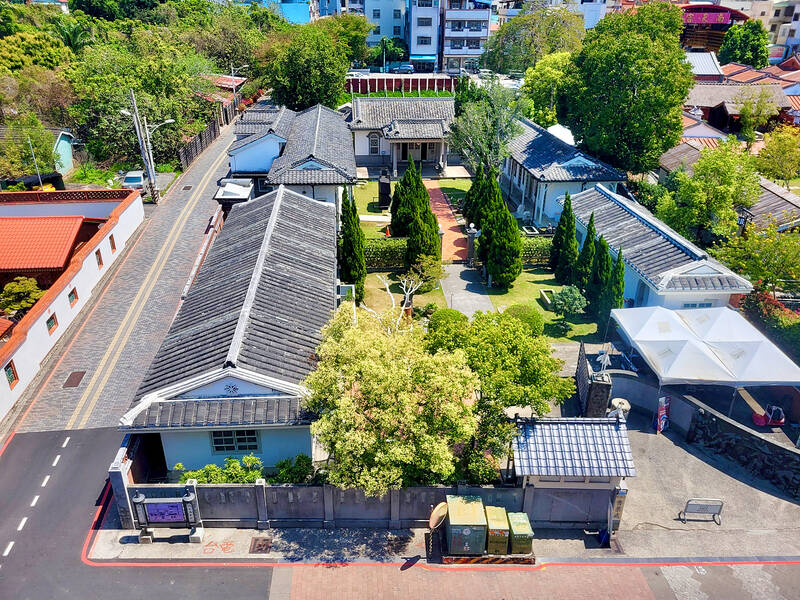
Photo: Tyler Cottenie
By the time construction was completed in 1914, the Qing empire had collapsed and Japanese rule had been entrenched in Taiwan for nearly two decades. Yipu Garden’s designer, Lin Ji-tang (林紀堂) was looking to the future. This does not mean his house was made to look entirely Japanese, however. There are elements of Chinese and Western influence — not to mention a secret escape tunnel — making the eclectic Yipu Garden a fascinating place to visit.
To enter Yipu Garden, visitors pass by a curving wall and through a gate facing one wing of the house, not the central hall. This was meant to represent a meandering river flowing into the property and its water being captured by one long arm of the building, with the water in turn symbolizing money. Back when the Lin family were major landlords, farmers would enter here and pay their rent in cash or grain in this extended arm of the house.
THE TIGER WING
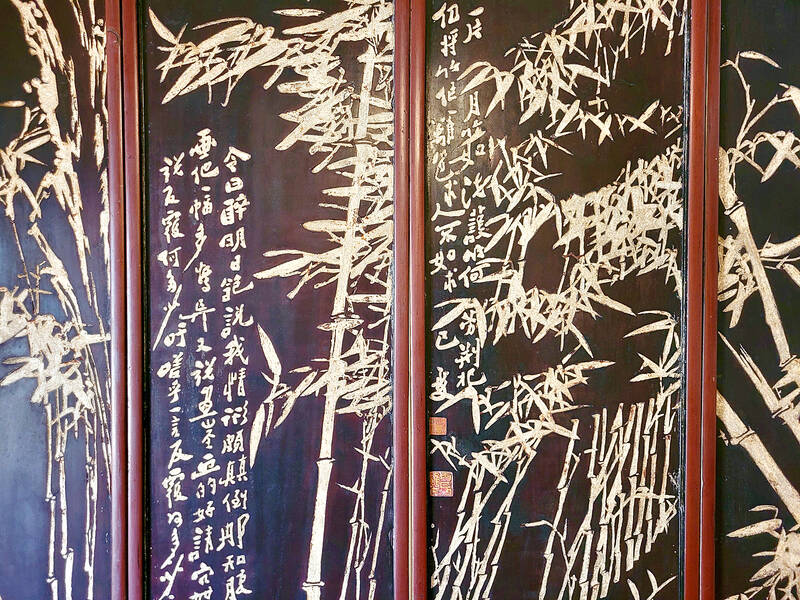
Photo: Tyler Cottenie
The property is rich with such symbolism and adherence to principles of fengshui, which the English signs do a decent job of explaining even without a guided tour. The wing of the house one faces when entering is represented by the tiger, which allegedly despises loud noise but doesn’t mind strong smells, so the kitchen and bathrooms can be found on this side.
The old accounting office in this wing has been transformed into a quaint restaurant, Yipu Vegan. Take a minute of your time to peek into the adjacent bathrooms — the toilets are white with blue painted decoration in the style of Ming Dynasty porcelain, and quite attractive, at least as far as toilets go.
Proceed through another gate into the inner courtyard to start your tour of the house’s interior. The house is a three-sided structure much like other Fujian-style houses in Taiwan, but the resemblance stops there. The covered walkways alongside the wings have narrow pillars topped with curved braces, reminiscent of the platforms in several Japanese-era train stations in Taiwan. The interior of the house also displays a high degree of foreign influence.
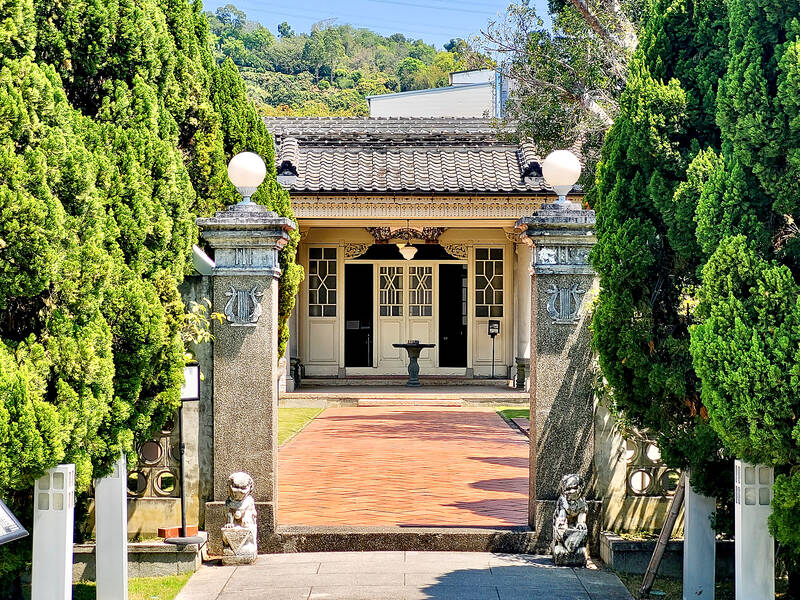
Photo: Tyler Cottenie
Proceeding into the tiger wing on the left, you will see a kitchen and casual dining area that look remarkably Western, with wooden cabinets, attractive shelving to display dishware, and an open view over the countertop between the two spaces. The painted floral tile table puts the final touch on a space that feels more like the south of France than Taichung.
The formal dining room contains a round table with lazy Susan as is commonly seen in Taiwanese restaurants. The painting hanging above the table, though painted by a local, is distinctly Western in style, as the artist studied in Europe. The sliding doors connecting the remaining spaces also feature quintessentially Western elements: stained glass windows.
The Lins did their best to adapt to life under the Japanese, and then the Chinese Nationalist Party (KMT) after World War II, but the design of the bedroom still reveals a keen awareness that life might not always be stable and predictable for this prominent family. The cabinets in the wall next to the bed are actually doors in disguise. Behind these doors is a secret room, in which a trapdoor leads to an underground bunker and escape tunnel.
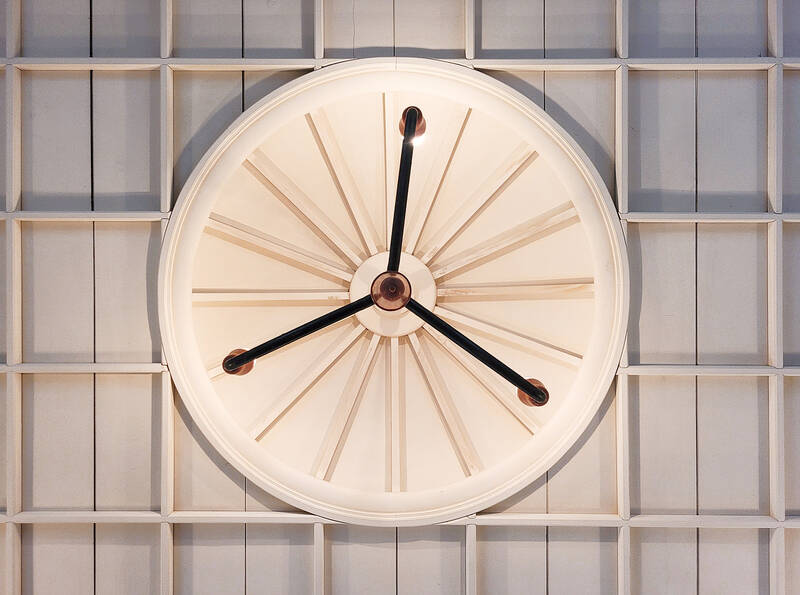
Photo: Tyler Cottenie
The secret room is also covered in mirrors designed to distract enemies and make them feel more vulnerable. Sniper holes in the wall on the second floor, if manned, would make it nearly impossible for any intruder to survive long enough in the room to locate the escape hatch. The secret tunnel is open to visitors now, but must be accessed from the tunnel’s outdoor exit at the back of the house.
THE DRAGON WING
During the Japanese era, an exotic animal zoo was located behind the central wing of Yipu Garden and was a common destination for Japanese tourists. Nowadays, the zoo is long gone and the building that was located here, severely damaged in the massive 921 Earthquake, has been cleared away.

Photo: Tyler Cottenie
The tour thus continues in the dragon wing, opposite the tiger wing. Dragons apparently don’t mind loud noise, so it was here that games and musical performances took place.
A special room just for women is located at the back of this wing. The floor was decorated with playing card suits, indicating that the main purpose of the room was for games. The slender wooden chairs here were specifically designed with women in mind, and the ebony mahjong table had drawers without handles that could only be easily opened by someone with long fingernails. The Gothic style bay window once again adds a Western touch to the space.
The designer’s son, Lin Ho-nen (林鶴年), studied music and theater in Japan, where he met his second wife, a Japanese woman. In order to make her feel more comfortable in Taiwan, he built a tatami room for her in the dragon wing. The two also performed together in the adjacent concert room, he on the piano and she — trained in opera in Europe — singing soprano.
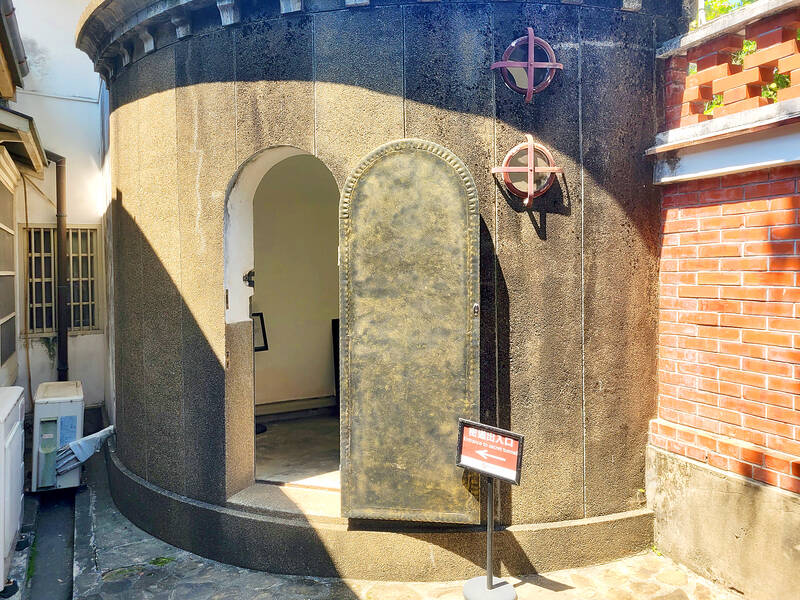
Photo: Tyler Cottenie
The couple never had any children, and the property now belongs to one of Lin Ho-nen’s second cousin’s descendants, Lin Chen-ting (林振廷). His son, Hanss Lin (林帛亨), is a professional race car driver and one room is now dedicated to displaying his achievements and memorabilia.
Concluding the tour is another somewhat related item sitting outdoors under a canopy: not a race car, but a Toyota Crown Royal Saloon sedan formerly owned by the Saudi ambassador to the Republic of China. After the countries severed diplomatic relations, the Lin family purchased the car and have maintained it in working order up to the present.
IF YOU GO
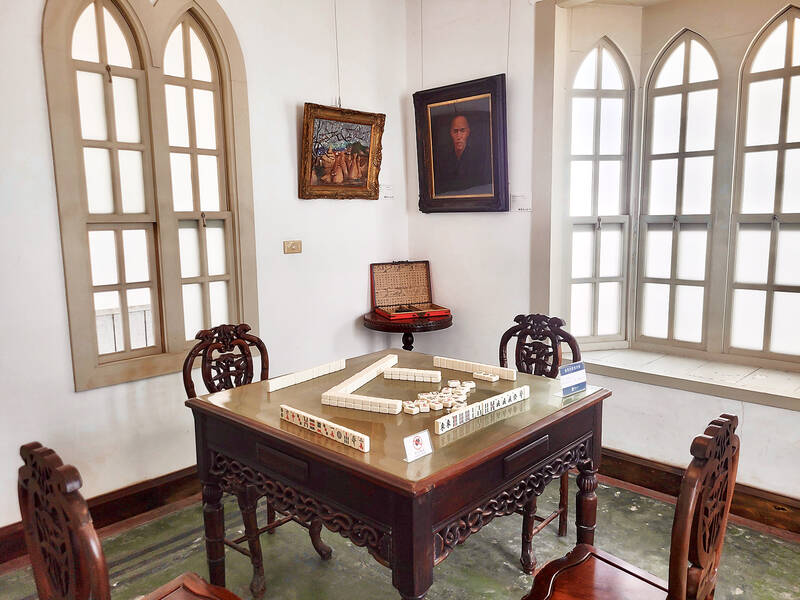
Photo: Tyler Cottenie
GETTING THERE
>> Wufeng District is far from central Taichung, so a bus ride there can take 45 minutes. From the Taichung HSR station, take Bus 151 to the “Wufeng” stop and walk a block east. From the Taichung railway station, take Bus 50, 59, 107 or 200 to the same stop. If you are driving, be sure to navigate to “Wufeng Lin’s Yipu Mansion” on Google Maps, not to the “Wufeng Lin Family Gong-Bao-Di Park” next door, which requires a separate ticket and was described in a Taipei Times feature on Jan. 24, “The Wufeng Lin Family Mansion.”
>> The English signage is adequate enough for a self-guided visit, but guided tours (Chinese only) can also be arranged every day through the Web site: wufeng-yipu.com.tw/reservation. One advantage of the guided tour is that the guide will also take you across the street to the family’s art warehouse, where you can have a quick look at their extensive collection of artwork and Qing-era artifacts, and get an excellent view of all the Lin family’s historical buildings from the upper-floor balcony.
>> Regular admission to Yipu Garden costs NT$150, or NT$250 for admission with a guided tour. The park is open 10am to 5pm from Tuesday to Sunday.

June 2 to June 8 Taiwan’s woodcutters believe that if they see even one speck of red in their cooked rice, no matter how small, an accident is going to happen. Peng Chin-tian (彭錦田) swears that this has proven to be true at every stop during his decades-long career in the logging industry. Along with mining, timber harvesting was once considered the most dangerous profession in Taiwan. Not only were mishaps common during all stages of processing, it was difficult to transport the injured to get medical treatment. Many died during the arduous journey. Peng recounts some of his accidents in

“Why does Taiwan identity decline?”a group of researchers lead by University of Nevada political scientist Austin Wang (王宏恩) asked in a recent paper. After all, it is not difficult to explain the rise in Taiwanese identity after the early 1990s. But no model predicted its decline during the 2016-2018 period, they say. After testing various alternative explanations, Wang et al argue that the fall-off in Taiwanese identity during that period is related to voter hedging based on the performance of the Democratic Progressive Party (DPP). Since the DPP is perceived as the guardian of Taiwan identity, when it performs well,

A short walk beneath the dense Amazon canopy, the forest abruptly opens up. Fallen logs are rotting, the trees grow sparser and the temperature rises in places sunlight hits the ground. This is what 24 years of severe drought looks like in the world’s largest rainforest. But this patch of degraded forest, about the size of a soccer field, is a scientific experiment. Launched in 2000 by Brazilian and British scientists, Esecaflor — short for “Forest Drought Study Project” in Portuguese — set out to simulate a future in which the changing climate could deplete the Amazon of rainfall. It is

The Taiwan People’s Party (TPP) on May 18 held a rally in Taichung to mark the anniversary of President William Lai’s (賴清德) inauguration on May 20. The title of the rally could be loosely translated to “May 18 recall fraudulent goods” (518退貨ㄌㄨㄚˋ!). Unlike in English, where the terms are the same, “recall” (退貨) in this context refers to product recalls due to damaged, defective or fraudulent merchandise, not the political recalls (罷免) currently dominating the headlines. I attended the rally to determine if the impression was correct that the TPP under party Chairman Huang Kuo-Chang (黃國昌) had little of a